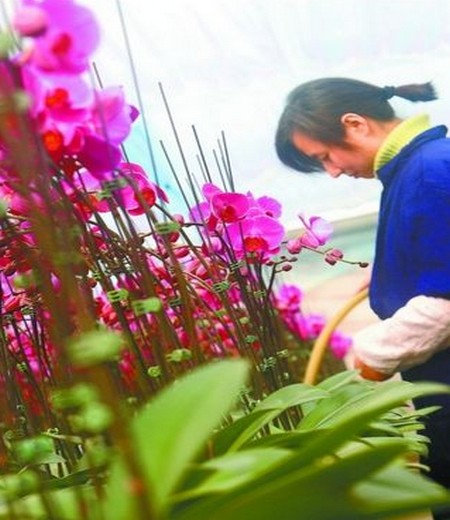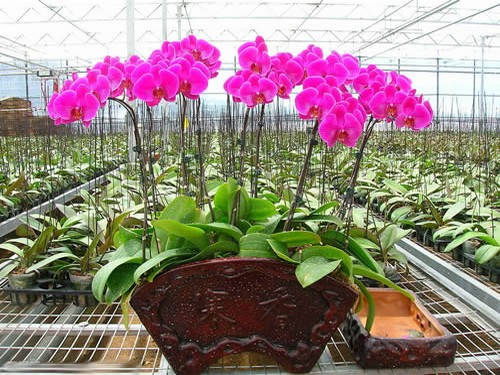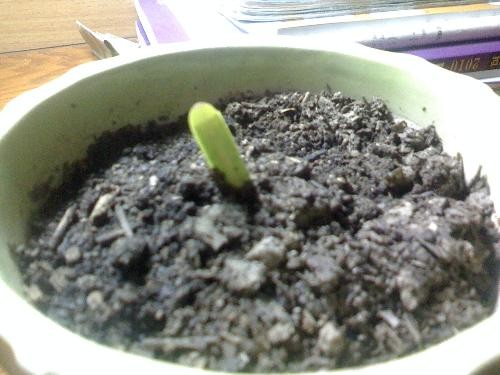Maintenance skills of family potted butterfly orchid during flowering period
In the process of home culture of Phalaenopsis, there is a widespread phenomenon of bud loss, or even apoptosis. In fact, Phalaenopsis is not a "short-lived" plant, and the flowering period can be prolonged by paying attention to some maintenance details.

Phalaenopsis flower bud is common, of course, some are due to technological problems in tissue culture growth, environmental pollution, mechanical damage and other reasons, but maintenance links should also be paid attention to, such as insect pests, medium too wet, poor ventilation and so on. If properly taken care of, Phalaenopsis can have a longer flowering period.
When there are insect pests in Phalaenopsis, such as mites and insect pests, Phalaenopsis shows that the bud is suddenly dehydrated, the color is dark red, and when the situation is serious, all the flower bracts will fall. If the medium is too wet, the oxygen content in the root system will be less, which will seriously affect the development of the bud, and the flower will bloom small and dull or drop. On the contrary, the dryness of the medium is beneficial to the beautiful flowers and colors.
At the same time, we should also pay attention to the air relative humidity, if the humidity is too low, it is easy to lead to bud wilting, shedding, and has a great impact on the size and color of flowers. If the relative humidity is low to a certain extent, the pollen grains of the flowers will fall off naturally and the flowers will wilt.
In addition, attention should be paid to the lighting and ventilation of Phalaenopsis. Lack of light will lead to insufficient photosynthesis, which will speed up and increase the nutrient consumption of respiration, resulting in short flowering period and serious flower drop. The purpose of strengthening ventilation is to allow fresh oxygen and carbon dioxide to enter the room, strengthen photosynthesis and prolong flowering.
In the indoor culture of Phalaenopsis, due to temperature and humidity and other factors, the leaves of the orchid plant only grow 1-2 in a year. Due to the limitation of temperature and humidity, Phalaenopsis grows singly on the top, and the flower bud grows between the two leaves. When the orchid plant grows flower bud, the indoor temperature is controlled at 18 to 20 degrees. After about 120 days of maintenance, Phalaenopsis will bloom. The flower stem to be born can be supported in advance in the flowerpot to prevent the flower stem from lodging.
The flower stem needs to be fixed for many times in the process of growth to prevent the flower stem from breaking. When each bud in the pot grows well, do not change the direction of the fragrance pot, lest the flowers of Phalaenopsis bloom uneven and affect the viewing. During the 4-month flowering period, keep the room ventilated and warm and keep the temperature between 15 and 18 degrees.
The flowering period is around the Spring Festival, and proper cooling can prolong the viewing time. The night temperature during flowering should be controlled between 13 ℃-16 ℃, but not less than 13 ℃. What should be paid attention to during flowering is gray spot, mainly due to not paying attention to the water droplets on the petals, or other diseases, which hinder the ornamental value of the flowers. Therefore, do not spray fat water on the petals.
Post-anthesis management: the florescence is generally around the Spring Festival, and the viewing period can be as long as 2 to 3 months.
When the flowers wither, the withered flowers should be cut off as soon as possible, which can reduce the consumption of nutrients. If the flower stem is cut from 4 to 5 nodes at the base, it can blossom again after 2 to 3 months. However, the nutrient consumption of the plant is too high, which is not conducive to the growth of the coming year. If you want to blossom again in the coming year, it is best to cut the flower stem from the base, and when the matrix ages, it should be replaced in time, otherwise the air permeability becomes worse, which will cause root rot, weaken plant growth and even die. Generally speaking, it is appropriate to change the basin in May when the new leaves grow.
Time: 2019-06-01 Click:
- Prev

Conservation methods and pest control of family potted Phalaenopsis
Phalaenopsis is a famous species of cut flowers. Phalaenopsis is a single-stem epiphytic orchid with short stems, large leaves, one to several flower stems, arched and large flowers, so named because the flowers are similar to butterflies. With beautiful flowers and gorgeous colors, it is a treasure of tropical orchids and is known as the queen of orchids. The butterfly orchid is graceful and gets its name because it is shaped like a butterfly.
- Next

Culture method of Bedanhua
The other shore flower is not only beautiful in appearance, but also has high medicinal value. It is deeply loved by flower and tree breeders. Before raising the other shore flower, it is necessary to understand the growth habits of the other shore flower. In addition to seed reproduction, it can also use its bulb to reproduce.
Related
- Fuxing push coffee new agricultural production and marketing class: lack of small-scale processing plants
- Jujube rice field leisure farm deep ploughing Yilan for five years to create a space for organic food and play
- Nongyu Farm-A trial of organic papaya for brave women with advanced technology
- Four points for attention in the prevention and control of diseases and insect pests of edible fungi
- How to add nutrient solution to Edible Fungi
- Is there any good way to control edible fungus mites?
- Open Inoculation Technology of Edible Fungi
- Is there any clever way to use fertilizer for edible fungus in winter?
- What agents are used to kill the pathogens of edible fungi in the mushroom shed?
- Rapid drying of Edible Fungi

